8 Best Practices in Dealing With Negative Customer Reviews
Learn the best ways to deal with negative customer reviews to protect your reputation.
Written by Evelina Carillo

You’ve got to have thick skin to run a business. Customers will often share their thoughts with you. When feedback is good, it can give you and your team a boost—people love your products!
That said, some don’t hold back from sharing less glowing feedback, especially when they’re angry customers. When you get comments such as this, it’s important that you respond in an appropriate and measured way.
When it comes to managing feedback, knowing how to deal with an upset customer is the most important skill that allows you to turn their experience around and maintain your brand’s reputation.
Whilst being thick-skinned is important, it’s also easier said than done. It can be easy to respond in the wrong way; that’s why this article is here to give a helping hand.
Importance of addressing negative customer feedback
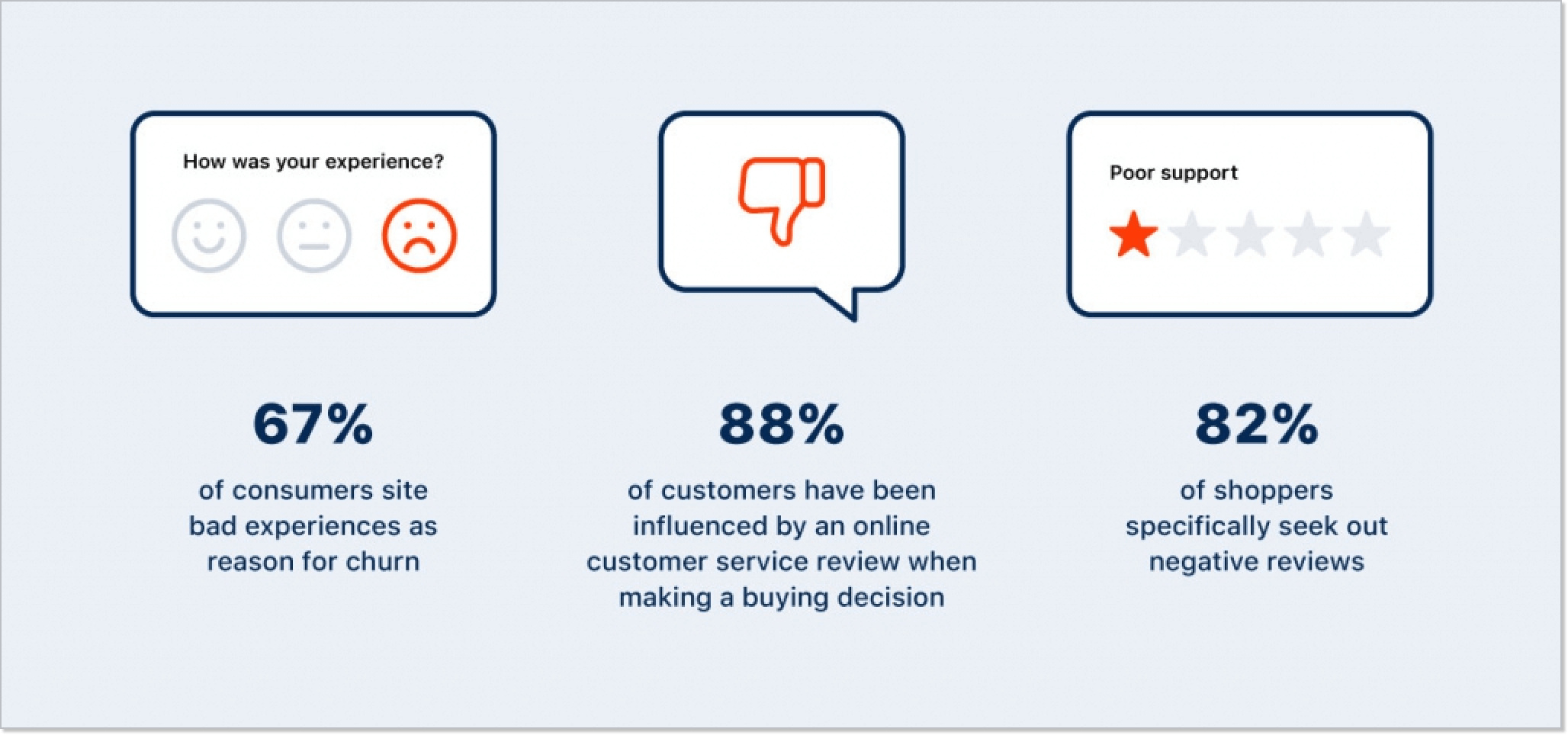
Why exactly should you respond to negative customer reviews? After all, isn’t it better to give attention to customers who say good things about your brand? There’s no denying that responding to positive reviews is important—a simple ‘thank you’ can encourage others to leave positive comments.
Responding to negative customer reviews, though, is equally important. A well-crafted review can:
- Demonstrate that you value your customer’s opinions.
- Encourage customers to come back after unsatisfactory experiences.
- Improve your brand’s reputation.
- Delivers a good first impression to potential customers who are considering doing business with you.
Keeping an eye on reviews takes time and effort. Your customer service team will need to allocate resources to make sure they can respond effectively. And if your business is still growing, you may need to leverage a small business accounting app to help you manage your finances on the go and make sure customer services has the funds it needs.
8 best practices in dealing with negative customer reviews
Of course, a simple response isn’t enough to win back customers. You need to respond in the right way. With that in mind, let’s explore different methods for responding to negative reviews.
Stay composed and avoid defensiveness
It’s easy to get defensive when you receive a negative review. This is especially the case when a customer isn’t being diplomatic. You’ve spent a long time trying to build the best service, so when an unhappy customer leaves bad comments, it can feel personal.
But, as tempting as it might be, your response isn’t a chance to tell a customer what you think of them. Remember, many people will see your response online. You don’t want customers to think that you don’t take feedback seriously.
So, take a deep breath. Frustration isn’t going to help the tone of your response. Once you’re ready, write a clear and measured response that:
- Thanks the customer for taking the time to leave a review.
- Apologizes for their poor experience.
- Acknowledges any mistakes you’ve made.
- Invites them to discuss the issue further via email.
- Incentivizes them to return.
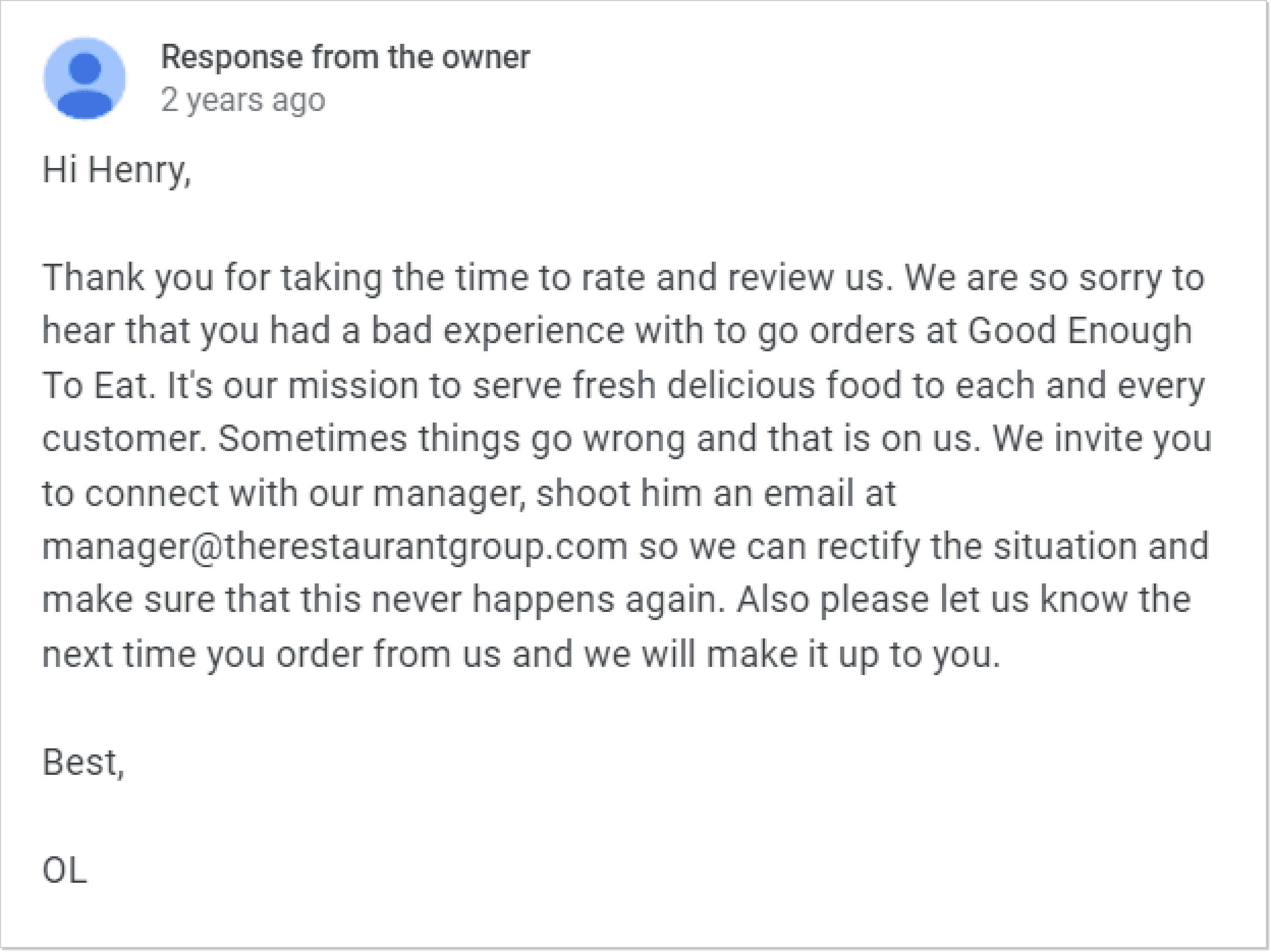
Take a look at this example by Good Enough To Eat. They apologize for the customer’s poor experience, take accountability, and invite further contact — all while remaining calm and composed.
Respond swiftly to show you value input
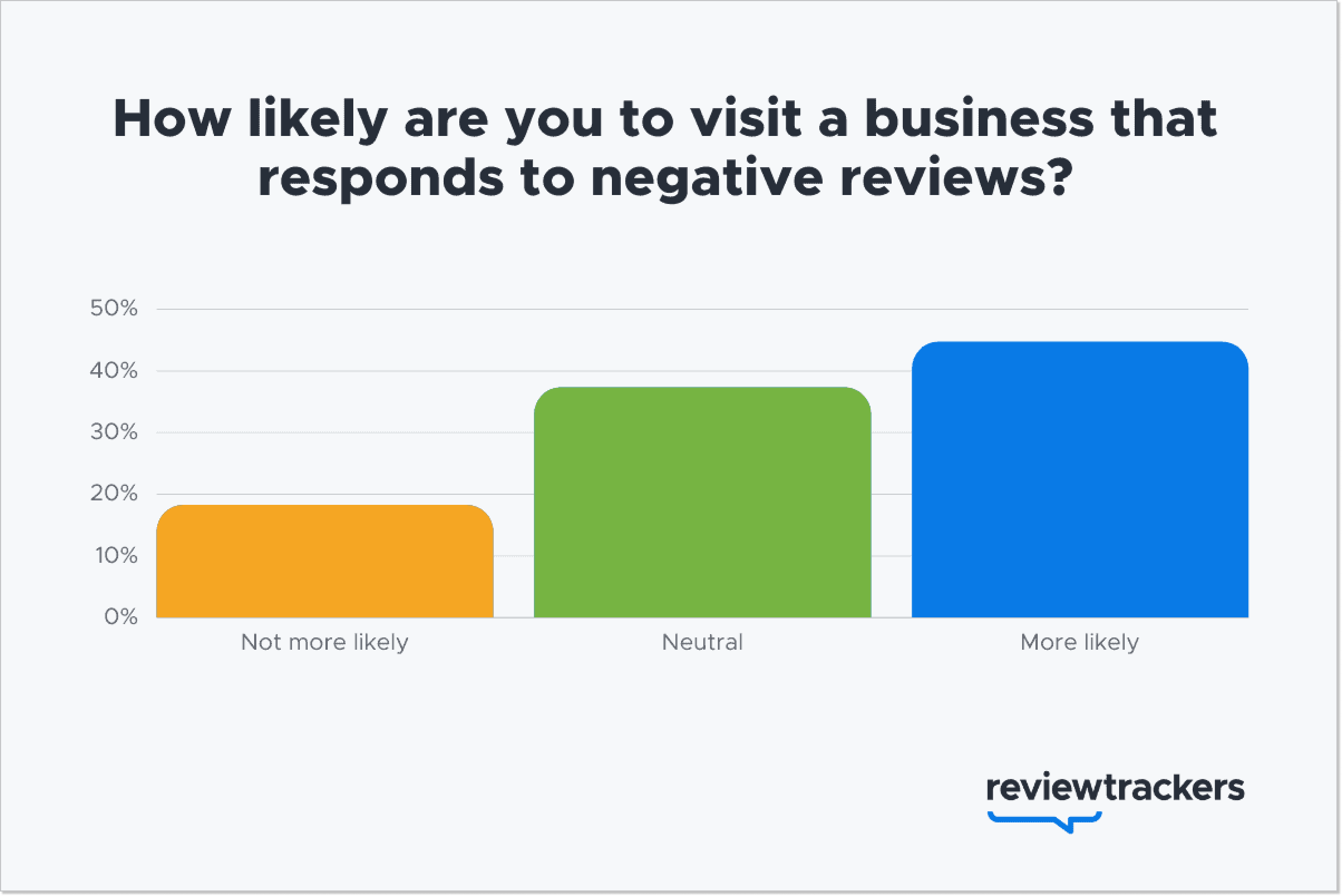
The expression ‘better late than never’ is almost always correct. It’s true that a late response to negative customer reviews is better than none at all. But If you want to show that you care, don’t leave customers waiting too long to receive a response.
Firstly, after a period of time, the dissatisfied customer will move on from your business. They’ll find a new brand that meets their needs. At this point, they’ll be less bothered about your response and less willing to reverse their opinion of your brand.
Also, a delayed response can seem like something of an afterthought. To prospective customers, this reply might seem disingenuous. After all, if you really cared about a customer’s complaint, why didn’t you reply sooner?
A swift response helps underline that customer concerns are your top priority.
Personalize replies and show sincerity
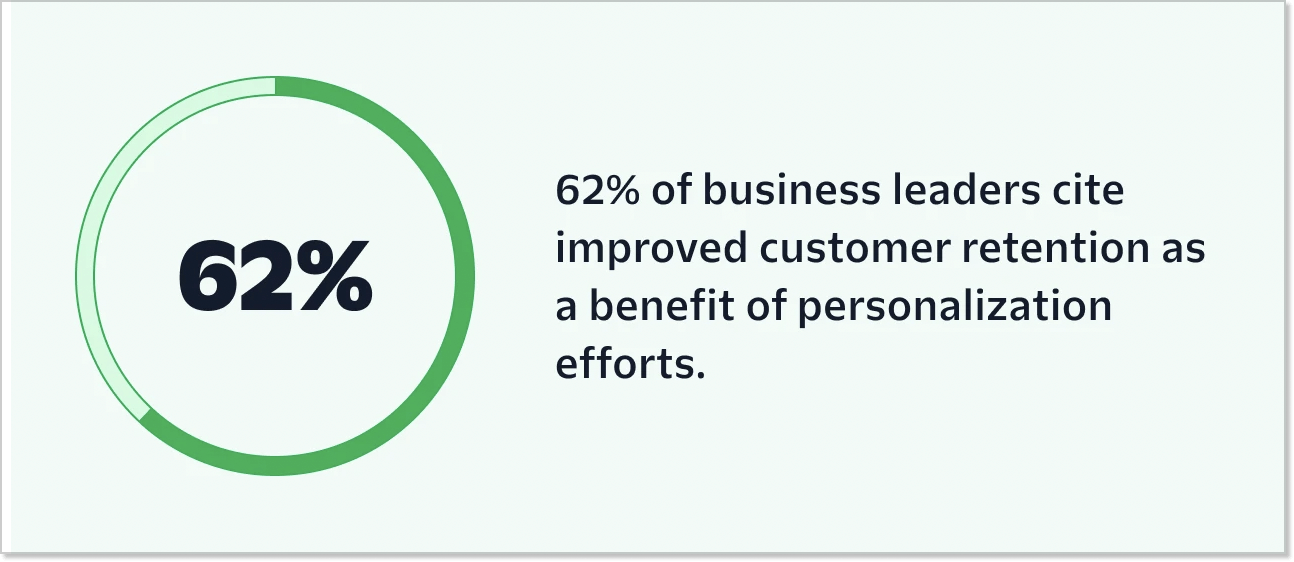
The modern customer loves personalization. The research speaks for itself; 56% of customers say they would become repeat buyers after a tailored experience. Yet, personalization isn’t all about sales, and when it comes to responding to reviews, a personalized response can appear much more sincere.
Put yourselves in the shoes of a customer for a moment. If you receive a response to your review that begins with ‘Hi customer’, it can appear very cold and robotic. Customers are already feeling lukewarm at best about your business. You don’t want to make them feel any less positive.
Personalization may even bring some lapsed customers back into the fold. Unconvinced? Again, research shows clear benefits—62% of businesses point to improved customer retention as a result of personalization.
Try personalizing your response by:
- Addressing customers by their first name.
- Avoiding generalized responses.
- Referencing the customer’s specific issues to show that you’ve actually read their feedback
- Offering personalized solutions and assistance.
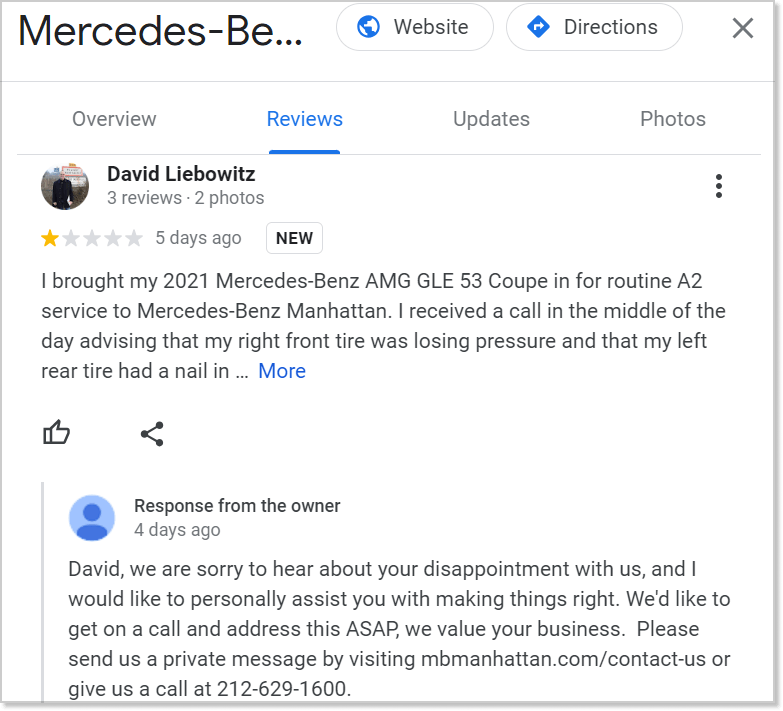
Provide effective solutions in detail
A simple sorry can go a long way, but it’s not enough to win back customer confidence. After receiving negative customer reviews, you need to offer clear solutions.
Let’s say that a customer is having issues with a faulty product. An apology doesn’t do much to address their complaint; they’re still stuck with a broken product and have lost money. Instead, you could offer to send a replacement product to the customer. You could also throw in a discount for the next time they shop with you.
Alternatively, you may simply want to offer a full refund. To take away the hassle of the refund process, look into getting an accounts payable system that enables you to easily and effectively manage finance tasks, for example, flagging disputes so you can keep better track of them.
Of course, some problems aren’t as simple to solve. Let’s say customers are complaining about a certain aspect of your website; in this case, it would be more productive to lay out the steps you’ll take to solve the problem.
Either way, a customer is given confidence that you will take action based on their comments.
Respond publicly and suggest private support for specifics
As mentioned, responding publicly to the review post is important. It’s a chance to convince prospective customers that you genuinely care about your buyers. That said, your public response shouldn’t be the end of the conversation. Offer to continue the conversation with the customer privately.
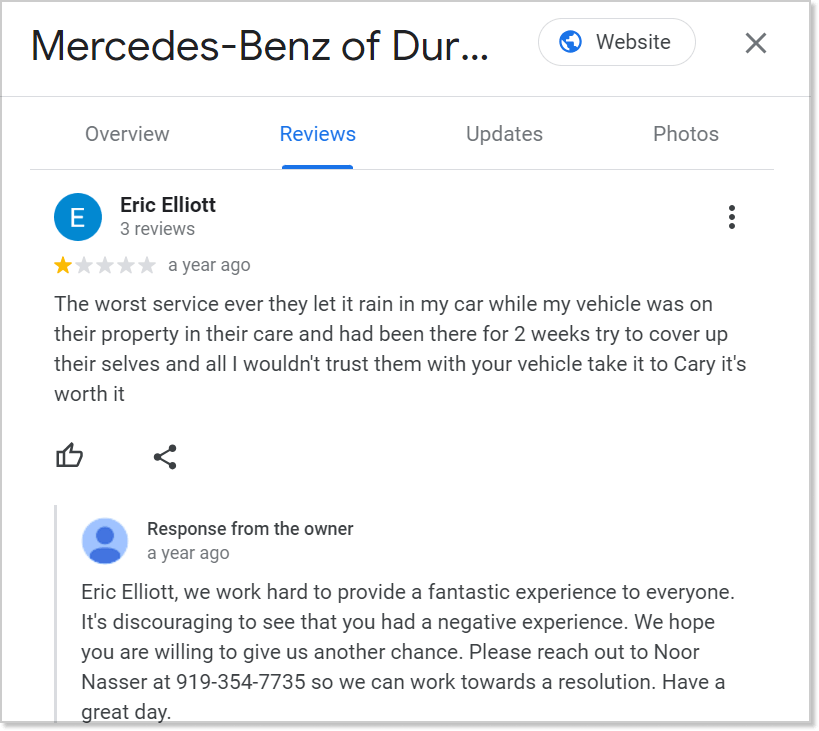
This approach has two major benefits. Firstly, if you’re offering to give a customer something, you will need their contact details. It goes without saying that customers won’t be keen on sharing these publicly.
Secondly, continuing the discussion offline limits further damage to your reputation from occurring.
Make sure to give customers a variety of options, including:
- Telephone
- Instant message
- Video chat
- A face-to-face meeting
The more flexibility you can provide, the better the impression you’ll make and the more likely you are to develop positive communication between your brand and the customer, improving the customer experience.
Maintain a consistent tone with brand identity in mind
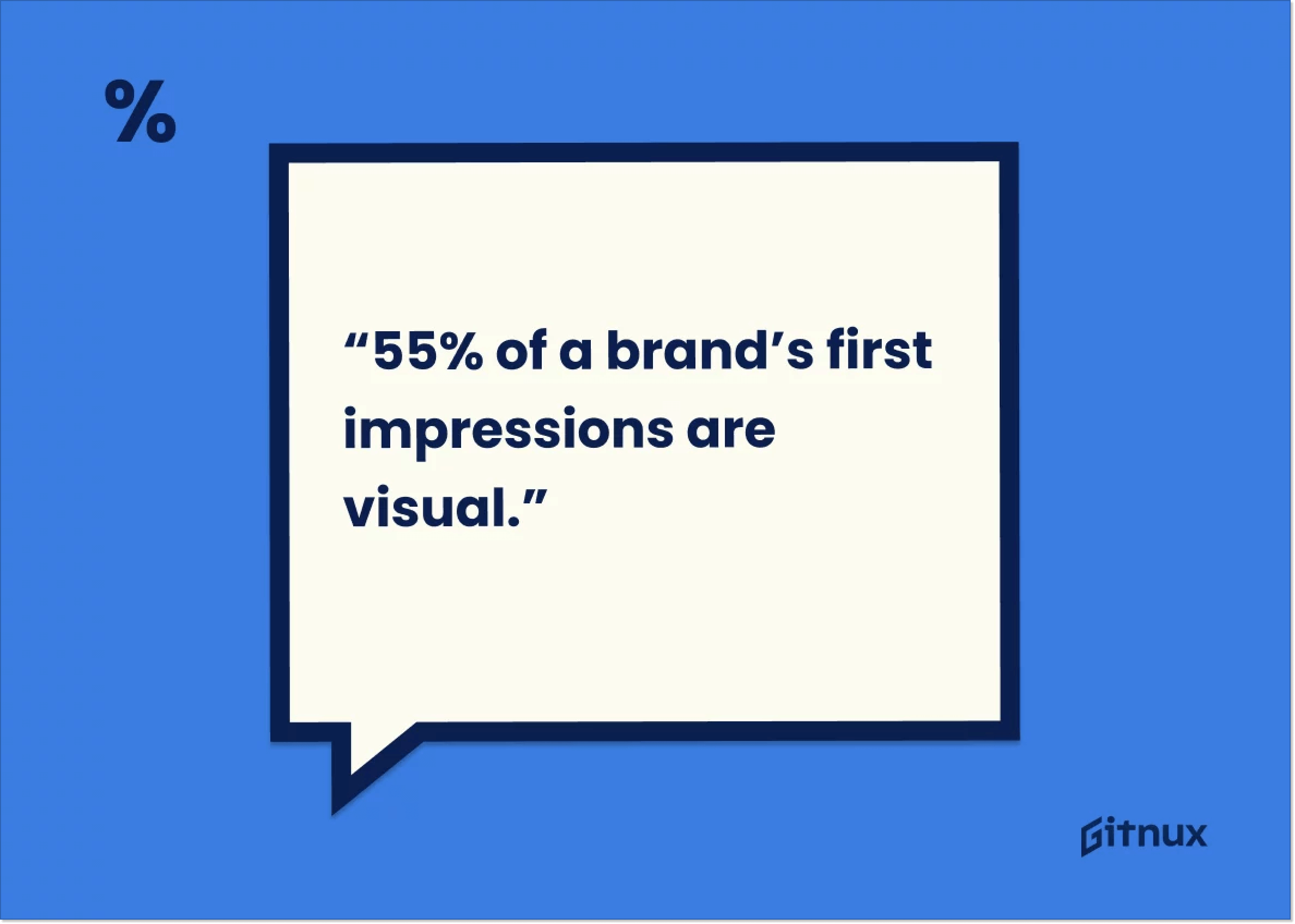
Brand identity is crucial to e-commerce. From blog posts to the layout and color scheme of your site and everything in between, identity needs to be integrated into every aspect of your brand. That includes customer reviews.
What vibe do you want your brand to give off? Approachable, formal, high-end? Just because you’re responding to customers in a more casual setting doesn’t mean you should forget your brand identity. If your identity is built around a sense of formality, do not suddenly adopt very casual language.
Stay true to your brand identity in all scenarios.
Encourage feedback and display a commitment to resolution
As we reflected earlier, no one likes receiving negative customer reviews. But customers shouldn’t be able to tell from your responses. When people do give you negative feedback, thank them for their comments. Again, this is all to work towards the goal of proving that you listen to customers.
Of course, you’d rather have positive reviews than negative. Where you can, make it clear that you encourage feedback. You can even go as far as offering exclusive discounts to customers who leave online reviews.
Monitor comments and leverage negatives for improvements
Not all reviews will come from formal review websites. Sometimes, it’s worth looking at less traditional sources for feedback.
People like to turn to social media to express what they think of a brand, for example. Keeping an eye on these comments can bring a number of benefits. The main advantage is that you can leverage feedback in future strategies.
Are there common or recurring complaints made by users? Are they often talking about a bad experience in relation to your brand? Use these to guide your future product development.
Take inspiration from Mac Outpost, who strategically use customer feedback to improve their services. These improvements are communicated directly to the customer, assuring them that their feedback is being heard.
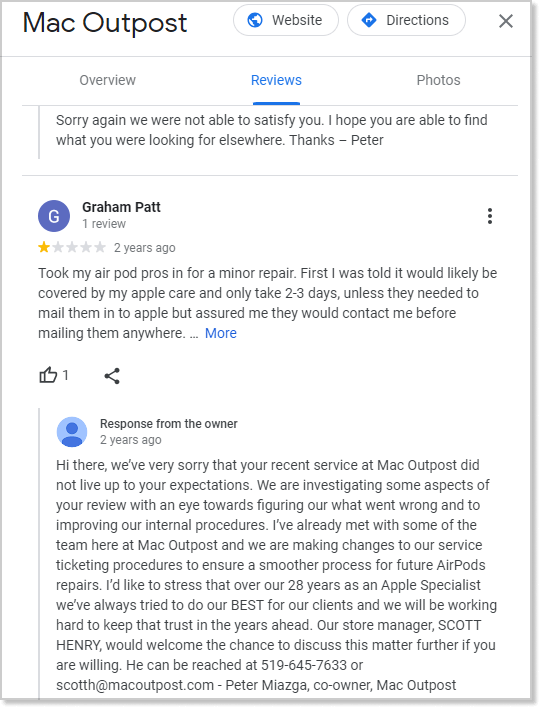
Your followers will see your replies to feedback, and customers will notice you responding to negative feedback with clear solutions, boosting brand loyalty.
That said, social media is free-for-all. It’s probably best that you avoid responding to some of the most explosive comments.
Key takeaways
And there you have it, eight simple practices for responding to negative customer reviews. Let’s quickly recap:
- Always keep your cool and respond in a constructive manner.
- Don’t leave customers waiting for a response, get your reply in quickly.
- Always address customers by their first name.
- Don’t just apologize—offer solutions that solve customers’ problems.
- Take the conversation offline, and speak to reviewers personally.
- Always maintain your brand identity and tone when responding.
- Thank reviewers for commenting and encourage others to leave reviews.
- Keep an eye on social media for user comments and leverage responses.
As a business owner, handling negative feedback can be daunting; stick to these tips, and you’ll turn the customer’s frown upside down in no time.





